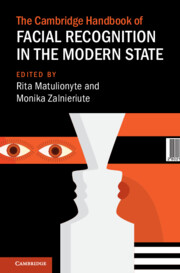Contents
Part IFacial Recognition Technology in Context: Technical and Legal Challenges
1Facial Recognition Technology: Key Issues and Emerging Concerns
4Transparency of Facial Recognition Technology and Trade Secrets
5Privacy’s Loose Grip on Facial Recognition: Law and the Operational Image
6Facial Recognition Technology and Potential for Bias and Discrimination
7Power and Protest: Facial Recognition and Public Space Surveillance
8Faces of War: Russia’s Invasion of Ukraine and Military Use of Facial Recognition Technology
Part IIFacial Recognition Technology across the Globe: Jurisdictional Perspectives
9Government Use of Facial Recognition Technologies under European Law
10European Biometric Surveillance, Concrete Rules, and Uniform Enforcement: Beyond Regulatory Abstraction and Local Enforcement
11Lawfulness and Police Use of Facial Recognition in the United Kingdom: Article 8 ECHR and Bridges v. South Wales Police
12Does Big Brother Exist? Facial Recognition Technology in the United Kingdom
13Facial Recognition Technologies in the Public Sector: Observations from Germany
14A Central-Eastern Europe Perspective on FRT Regulation: A Case Study of Lithuania
15An Overview of Facial Recognition Technology Regulation in the United States
16Regulating Facial Recognition in Brazil: Legal and Policy Perspectives
18Principled Regulation of Facial Recognition Technology: A View from Australia and New Zealand
19Morocco’s Governance of Cities and Borders: AI-Enhanced Surveillance, Facial Recognition, and Human Rights



